| Solar eclipse of December 16, 2047 | |
|---|---|
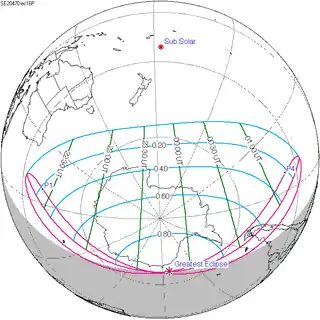 Map | |
| Type of eclipse | |
| Nature | Partial |
| Gamma | −1.0661 |
| Magnitude | 0.8816 |
| Maximum eclipse | |
| Coordinates | 66°24′S 6°36′W / 66.4°S 6.6°W |
| Times (UTC) | |
| Greatest eclipse | 23:50:12 |
| References | |
| Saros | 123 (55 of 70) |
| Catalog # (SE5000) | 9614 |
A partial solar eclipse will occur on Monday, December 16, 2047. A solar eclipse occurs when the Moon passes between Earth and the Sun, thereby totally or partly obscuring the image of the Sun for a viewer on Earth. A partial solar eclipse occurs in the polar regions of the Earth when the center of the Moon's shadow misses the Earth.
Images
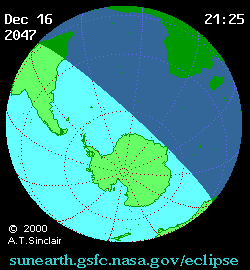
Animated path
Related eclipses
Solar eclipses of 2047–2050
This eclipse is a member of a semester series. An eclipse in a semester series of solar eclipses repeats approximately every 177 days and 4 hours (a semester) at alternating nodes of the Moon's orbit.[1]
Note: Partial lunar eclipses on January 26, 2047 and July 22, 2047 occur on the previous lunar year eclipse set.
| Solar eclipse sets from 2047–2050 | ||||
|---|---|---|---|---|
| Descending node | Ascending node | |||
| 118 | June 23, 2047 Partial |
123 | December 16, 2047 Partial | |
| 128 | June 11, 2048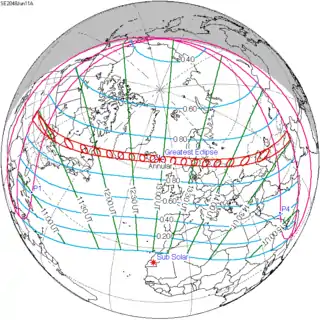 Annular |
133 | December 5, 2048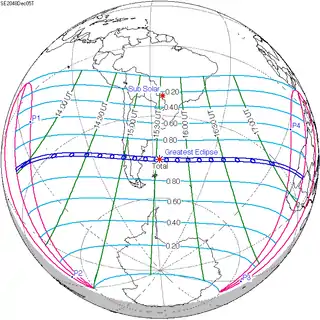 Total | |
| 138 | May 31, 2049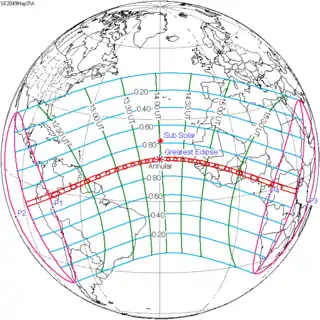 Annular |
143 | November 25, 2049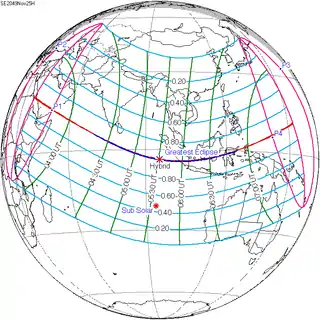 Hybrid | |
| 148 | May 20, 2050 Hybrid |
153 | November 14, 2050 Partial | |
References
- ↑ van Gent, R.H. "Solar- and Lunar-Eclipse Predictions from Antiquity to the Present". A Catalogue of Eclipse Cycles. Utrecht University. Retrieved 6 October 2018.
External links
- Earth visibility chart and eclipse statistics Eclipse Predictions by Fred Espenak, NASA/GSFC
This article is issued from Wikipedia. The text is licensed under Creative Commons - Attribution - Sharealike. Additional terms may apply for the media files.
.jpg.webp)

